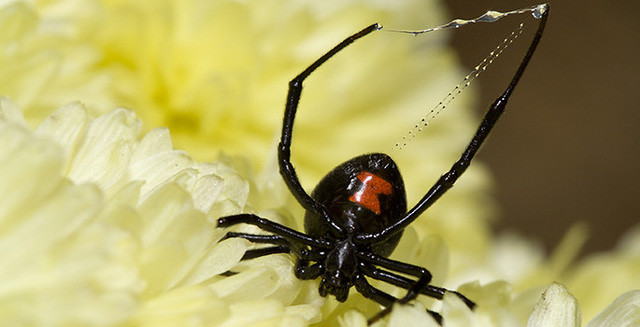Discovered a strange virus that carries the gene of the black spider
In an attempt to recreate the gene sequence of a strange virus, scientists have discovered something both strange and scary: one-third of the virus's genes are similar to animals, and the sequence of genes matches with DNA in black venom spider's venom.
It is unclear how this virus can get the spider's DNA (and some other animals), but scientists think the virus does so to make it easier to infect. .
"Discovering the DNA in the black widow spider's venom is a surprise to us, because this is the first time we have discovered the bacterium, the virus that attacks this bacterium carries the DNA of the animal. "in my body," said biologist Seth Bordenstein from Vanderbilt University.
Bordenstein and his wife, Sarah Bordenstein, a microbiologist, have been studying this mysterious virus for 15 years, but this is the first time they have discovered the genetic fingerprint of the animal in the virus.

The gene sequence in this virus matches the DNA found in the black widow spider's venom.
Typically, the virus develops according to certain biological patterns, only attacking a certain living organism such as bacteria, ancient bacteria (unicellular protozoan) or eukaryotes (animals and plants). ).
But the virus, called WO , broke that boundary. In addition to attacking their main target, Wolbachia , they also had a method to infiltrate animal cells.
"This is the first time that a virus has been able to infect and invade different living states," said biologist Elizabeth McGraw of Monash University, Australia.
We still do not know how WO can steal genes of other species, Professor Bordenstein thinks this is an evolutionary method of WO , a method that makes it easy to infect and escape from Wolbachia, the type. bacteria that it still attacks regularly.
Wolbachia is a bacterium that infects arthropods like insects, spiders and crustaceans. They live on the cell membrane of these species. Therefore, in order for WO to reach Wolbachia, they must pass two membranes: bacteria and cell.

Black widow spider.
Of course, the WO virus's DNA itself could infect the other bacteria, but first it had to overcome the host's protective layer of that arthropod. Because spider venom combined with WO's DNA creates a gene coding for a venom that can penetrate the cell membrane, WO has obtained a perfect tool to penetrate and approach Wolbachia. .
In addition, the researchers also found traces of other animals' genes in WO's DNA, such as the gene sequences used by eukaryotes to detect pathogens and avoid the immune system's response, an extremely effective system for an invasive bacteriophage.
"It seems that the virus always has this feature," said Sarah Bordenstein. "It was like a party with a virus, it took different parts of many organisms and then combined it into a super gene", like how we choose the best and most delicious food of the buffet and turn it into become a super delicious meal for me.
- Video: The molting process of the black widow spider
- Body reaction after black widow spider bite
- Dance 'sexy' helps male spiders avoid drawing close body
- Poisonous spider spider
- Strange story: Raising hybrid goats, harvesting goat milk containing spider silk selling billions
- 10 poisonous spiders are the most feared for humans
- DNA carries an ancient viral signature capable of destroying cancer
- Video: What if it is bitten by the world's most poisonous spider?
- The strange creature is shaped like a hybrid spider
- Found a mutant spider web because of radioactive contamination
- Rare spiders with the same buttocks as aliens
- One-fifth of the world's population has smart, long-lived genes
 Why do potatoes have eyes?
Why do potatoes have eyes? 'Tragedy' the world's largest carnivorous life: Death becomes ... public toilet
'Tragedy' the world's largest carnivorous life: Death becomes ... public toilet Tomatoes were once considered 'poisonous' for 200 years
Tomatoes were once considered 'poisonous' for 200 years Detecting microscopic parasites on human face
Detecting microscopic parasites on human face